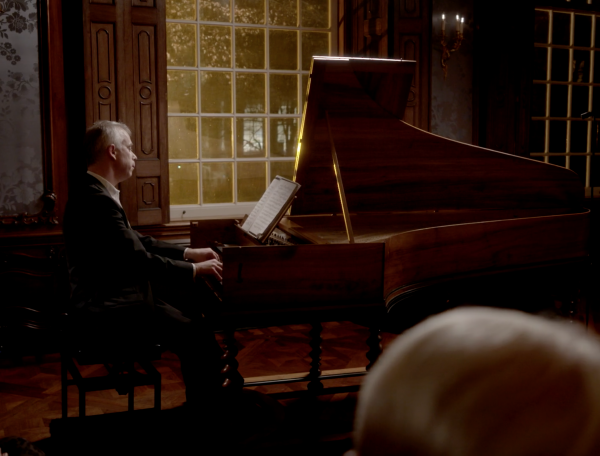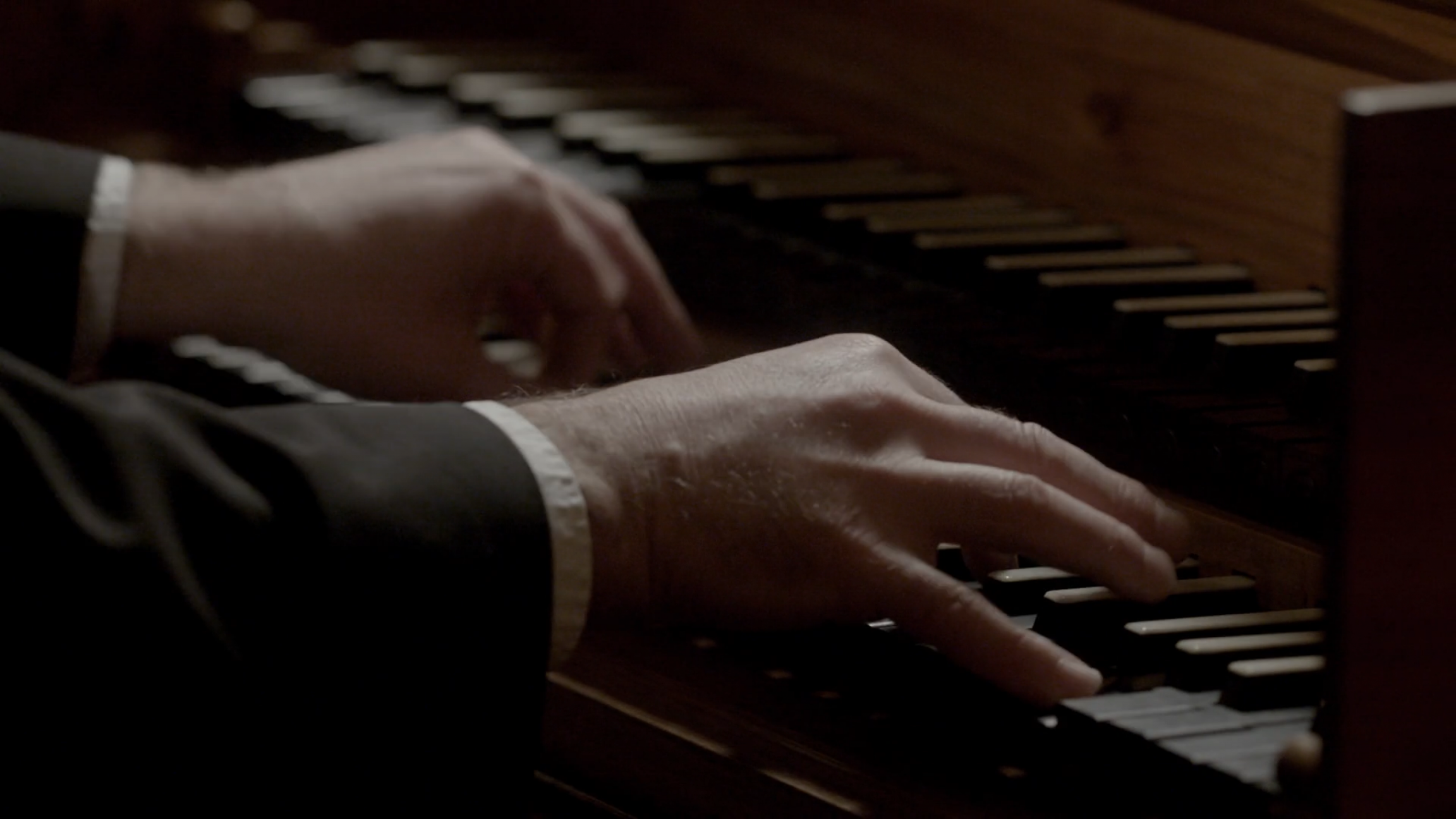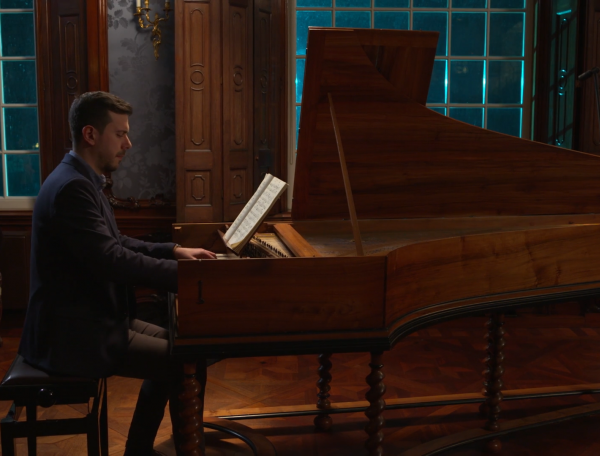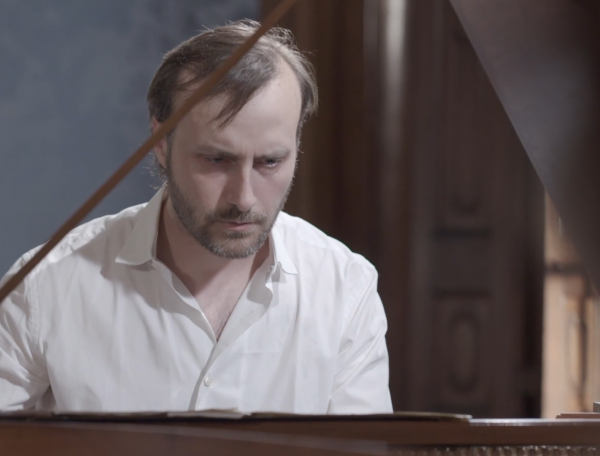

'English' Suite no. 3 in G minor
BWV 808 performed by Pierre Hantaï
at the Bartolotti House, Amsterdam
Behind the music
Heart-rending beauty
A concerto, a tombeau, assorted dances and a fugue!
The prelude that begins this popular suite resembles an Italian concerto grosso. Bach opens with a simple motif that gradually moves over the whole keyboard and swells to an orchestral crescendo. It is followed by a more soloist passage, in which two solo instruments (violins, for example, says harpsichordist Pierre Hantaï) flutter around one another. The alternation between these two timbres – solo and orchestra – determines the clear structure of this sizeable opening section.
The dances that follow are based more on the French model, although Bach cannot resist adding complex counter themes to the relatively simple melodies of the Allemande and the Courante. The Sarabande is an absolute masterpiece of heart-rending beauty, according to Pierre Hantaï. Could it possibly be funeral music; a tombeau for Bach’s first wife, who died in the period in which he wrote the ‘English’ suites? In any case, we are far removed from the dance music suggested by the French titles of these pieces. Although this Sarabande does respect the characteristic rhythm, it would be unplayable in the tempo to which it ought to be danced. And Bach also adds extensive ornamentation, which reinforces the extremely expressive power of the piece.
The two highly contrasting Gavottes are decidedly French in character. The first includes a catchy drum motif, and the second is called Musette – a simple pastorale dance often used by French composers like Rameau and Couperin.
At the end of the suite, Bach adds his signature with a Gigue that is also unmistakably a complete three-part fugue, in which he performs his customary thematic acrobatics.
‘English’ suites, BWV 806-811
The six ‘English’ suites were probably composed between 1710 and 1720, and in any case before the ‘French’ suites and the partitas. It remains rather unclear as to why they are called ‘English’. According to the first Bach biographer, Forkel, they were dedicated to an English aristocrat whose name is not given. They are also stylistically linked to the six harpsichord suites by the French composer Charles Dieupart, who lived in London. And the title page of the copy belonging to Bach’s youngest son, Johann Christian, who also lived in London, states ‘fait pour les anglois’.
But just like Bach’s other surviving suites for keyboard, the English suites are predominantly a synthesis of German, Italian and French style elements. To a certain extent, they are more French than the so-called ‘French’ suites. All six begin with an extensive prelude, following the example of French lute suites. The prelude is followed by the classic series of stylised dances: allemande, courante, sarabande and gigue, with a free choice of gavotte, bourrée, passepied or minuet in between the latter two set dances.
The Bartolotti House
We made this recording at The Bartolotti House, at Herengracht 170 and 172. The house at the back of no. 170 was occupied by harpsichordist, organist and conductor Gustav Leonhardt from 1974 to his death in 2012. Leonhardt was one of the pioneers of early music in the Netherlands. As a teacher and performer, he was a source of inspiration to many harpsichord players around the world.
It is one of the most impressive buildings in the old centre of Amsterdam. It was built around 1620 as a residence, on commission from the wealthy businessman Willem van den Heuvel, who had inherited a lot of money from a childless uncle by marriage, called Giovanni Battista Bartolotti, who came from Bologna. The Dutch Renaissance-style design was probably done by the Amsterdam city architect Hendrick de Keyser.
Over the centuries, the house has been split up and has undergone several modernisations. You can still see many wonderful historical decorative features from the various renovations. The two parts of the Bartolotti House came into the possession of Vereniging Hendrick de Keyser, which now has its office there.
- BWV
- 808
- Title
- Suite in G minor
- Epithet
- 'English' Suite no. 3
- Instrument
- harpsichord
- Genre
- harpsichord works
- Serie
- English Suites (clavier)
- Year
- 1710-1720
- City
- Cöthen?
Extra videos
Vocal texts
Original
Translation
Credits
-
- Release date
- 26 January 2018
-
- Recording date
- 10 December 2016
-
- Location
- Bartolotti House, Amsterdam
-
- Harpsichordist
- Pierre Hantaï
-
- Harpsichord
- Bruce Kennedy, 1989 after Michael Mietke
-
- Director and editor
- Gijs Besseling
-
- Music recording, edit and mix
- Guido Tichelman
-
- Camera
- Danny Noordanus
-
- Camera assistant
- Eline Eestermans
-
- Interview
- Gijs Besseling, Jan Van den Bossche
-
- Producer
- Jessie Verbrugh
-
- Acknowledgement
- Vereniging Hendrick de Keyser
Discover
Help us to complete All of Bach
There are still many recordings to be made before the whole of Bach’s oeuvre is online. And we can’t complete the task without the financial support of our patrons. Please help us to complete the musical heritage of Bach, by supporting us with a donation!

